The Great Barrier Reef is the jewel in Queensland’s crown and one of the seven wonders of the natural world. It’s a beautiful living thing stretching 2300 km along the Queensland coast and home to various marine life, including whales, dugongs, dolphins and sharks. Several facts about the Great Barrier Reef will amaze you. For starters, one of the little-known facts about the Great Barrier Reef is it began life when a single coral polyp the size of a grain of rice attached itself to a rock in the ocean. Here are 30 more:
Contents
- Great Barrier Reef Facts
- Top Tours
- 30 Interesting Facts About The Great Barrier Reef
- 1- The Great Barrier Reef is made up of 3000 smaller reefs
- 2- The Great Barrier Reef is the only living thing visible from space
- 3- The Great Barrier Reef is half the size of Texas
- 4- The Great Barrier Reef is a Marine Park
- 5- The Great Barrier Reef is a World Heritage Area
- 6- Over 70 Australian Aboriginal groups call the Great Barrier Reef
- 7- The Great Barrier Reef is 20 million years old
- Coral Reef Facts
- 8- The Great Barrier Reef has over 600 types of coral
- 9- Corals belong to an animal group called Cnidaria
- 10- Some corals eat fish
- 11- Boulder coral live up to 1000 years
- 12- Soft corals defend themselves by producing chemicals
- 13- The threat of coral bleaching in 2019 is high
- 14- Cyclones can stop coral bleaching
- 15- Corals create an underwater snowstorm when they reproduce
- 16- The Great Barrier Reef has 100 types of jellyfish
- Great Barrier Reef Fish
- Great Barrier Reef animals
- Great Barrier Reef Islands
- 25- Hamilton Island is the only island with a commercial airport
- 26- Lady Musgrave Island has the largest navigable lagoon on the Great Barrier Reef
- 27- Heron Bommie is listed as Jacques Cousteau’s top ten diving spots
- 28- Cod Hole
- 29- Citizen scientists can contribute to research
- 30- Around 2.6 million people visit the Great Barrier Reef each year
Great Barrier Reef Facts
Top Tours
- From Cairns: Great Barrier Reef Cruise – a popular cruise by Premium Catamaran.
- Airlie Beach: 1-Hour Whitsunday Reef & Island Scenic Flight – see the Great Barrier Reef from the sky. You will be amazed!
- Port Douglas: Silversonic Great Barrier Reef – Dive and snorkel aboard this highly popular cruise.
30 Interesting Facts About The Great Barrier Reef
1- The Great Barrier Reef is made up of 3000 smaller reefs
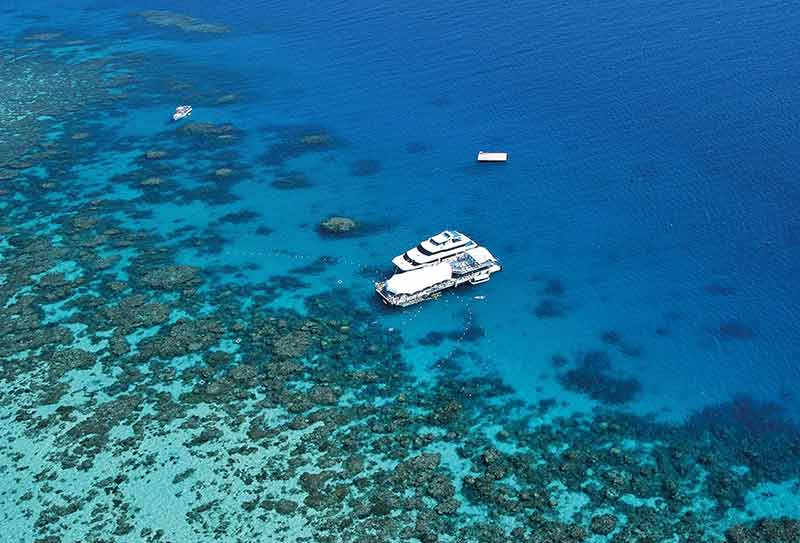
The Great Barrier Reef is not one large single reef, it consists of around 3000 individual reefs and over 900 islands (including 300 coral cays).
2- The Great Barrier Reef is the only living thing visible from space
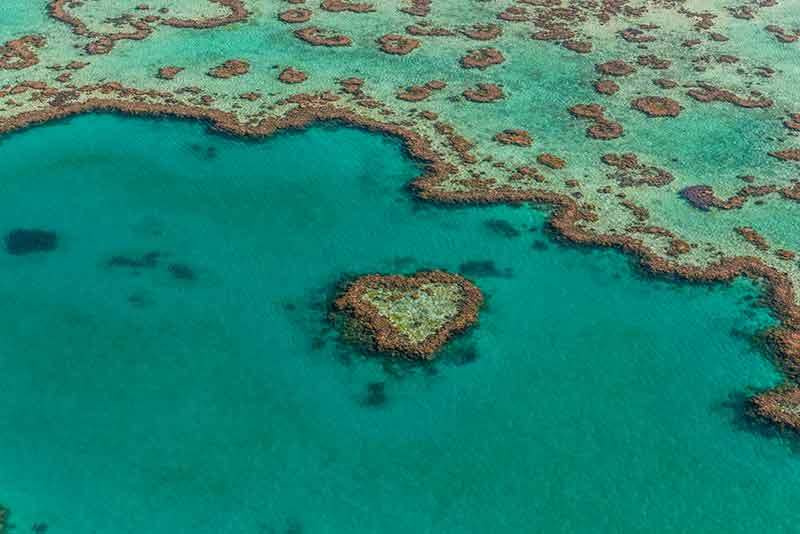
The Great Barrier Reef is the only living thing you can see from space (it’s longer than the Great Wall of China!) and is an Australian landmark used by astronauts.
It stretches 2300 km (1430 miles) along the Queensland coast and is about the same distance between Vancouver and the Mexican border.
3- The Great Barrier Reef is half the size of Texas
The Great Barrier Reef is about the same size as Italy, Germany, Japan or Malaysia and equivalent in size to 70 million football fields.
4- The Great Barrier Reef is a Marine Park
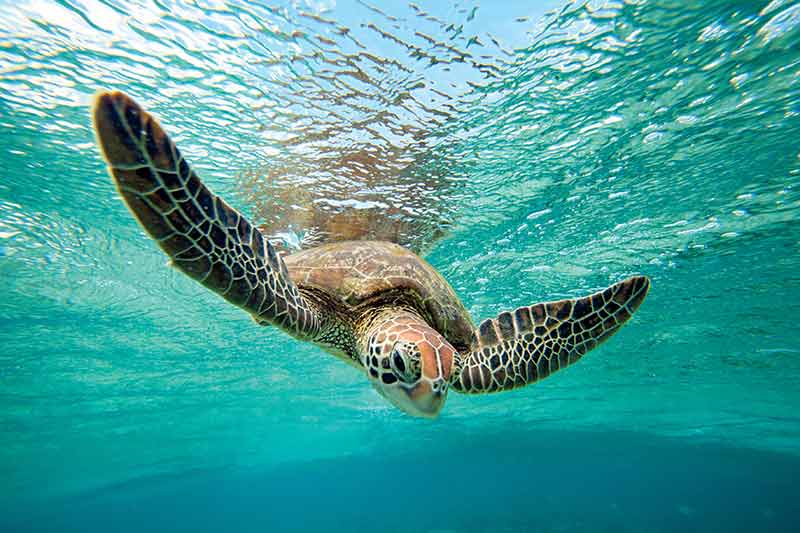
The Great Barrier Reef Marine Park was created in 1975 and includes the airspace above and into the earth beneath the seabed.
5- The Great Barrier Reef is a World Heritage Area
In 1981, the Great Barrier Reef joined the list of UNESCO World Heritage treasures for its natural beauty (both below and above the water) and spectacular scenery.
6- Over 70 Australian Aboriginal groups call the Great Barrier Reef
7- The Great Barrier Reef is 20 million years old
Although no one knows for sure how old the Reef is, scientists estimate it to be about 20 million years old.
Coral Reef Facts
8- The Great Barrier Reef has over 600 types of coral
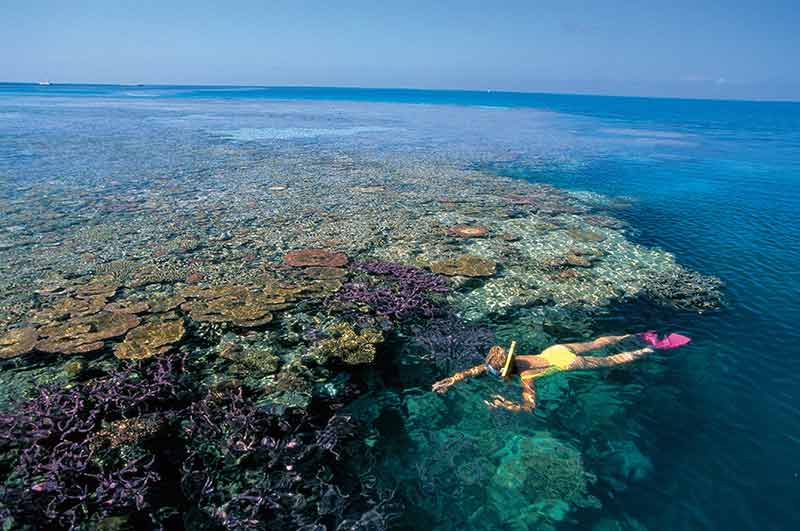
With 600 different types of coral, both soft and hard, the Great Barrier Reef is the world’s largest coral reef ecosystem.
It has 450 types of hard coral and 150 species of soft coral, making it about 10 per cent of the world’s coral reef ecosystems and the planet’s most complex natural system.
9- Corals belong to an animal group called Cnidaria
Along with sea anemones and jellyfish, corals are invertebrate animals belonging to the Cnidaria group.
Hard coral is formed when millions of coral polyps grow in a colony.
10- Some corals eat fish
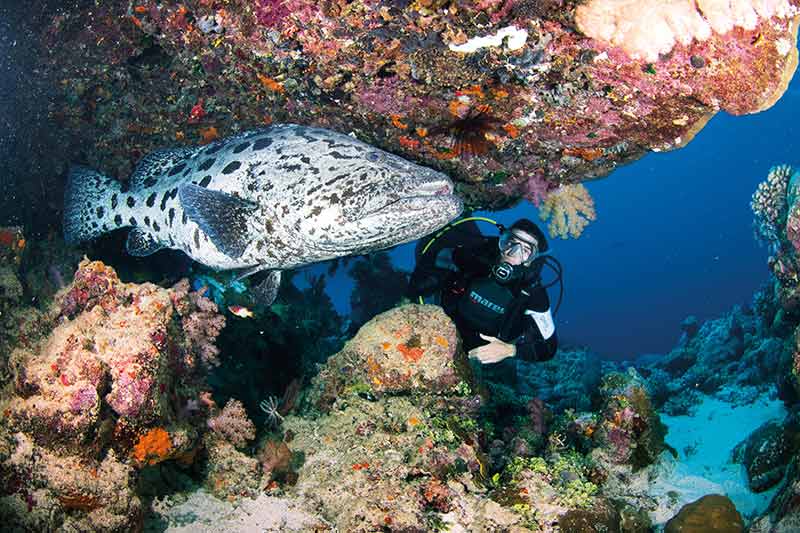
Corals usually receive nutrition from algae called zooxanthellae (this algae live within the tissues of the coral and needs the sun to produce food) but some corals eat plankton and small fish by using their tentacles to paralyse their prey.
11- Boulder coral live up to 1000 years
The Great Barrier Reef is home to colonies of boulder coral that are the oldest corals.
These slow-growing coral can live up to 1000 years and grow very slowly, about 1 cm a year.
Check out a range of Great Barrier Reef Cruises
12- Soft corals defend themselves by producing chemicals
The brightly coloured corals that draw your attention are soft corals, which are constantly in danger of being eaten by fish and crustaceans.
They defend themselves by producing chemicals that make them unpalatable and sometimes poisonous to these predators.
13- The threat of coral bleaching in 2019 is high
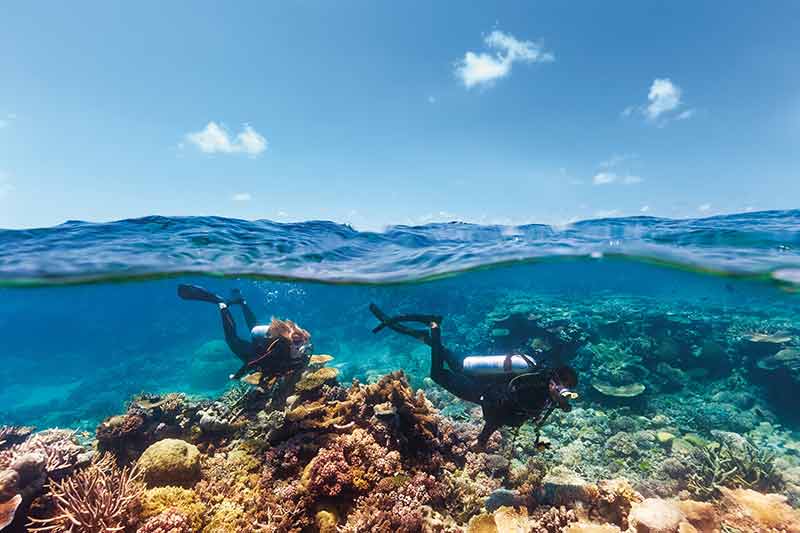
The Great Barrier Reef experienced coral bleaching in 1998 when 42% of the reefs were bleached and in 2002 when 54% of reefs were affected by bleaching.
About half of the Great Barrier Reef’s shallow-water coral was killed in 2016 and 2017 when heatwaves in the ocean stress out the coral, causing them to expel the colourful algae inside them.
If the temperatures don’t cool down, the coral turns white, starves and dies.
14- Cyclones can stop coral bleaching
By cooling down the water’s surface, cyclones can prevent coral bleaching.
This happened in 2016 when the Southern Great Barrier Reef avoided severe bleaching due to Cyclone Winston.
15- Corals create an underwater snowstorm when they reproduce
Coral spawning season is in November and is dictated by the water temperature and the phases of the moon.
16- The Great Barrier Reef has 100 types of jellyfish
Jellyfish are not fish, they belong to the same family is coral – the Cnidaria group.
Jellyfish are invertebrates that don’t have a skeleton, brain or central nervous system.
More than 100 species of jellyfish have been seen along the Great Barrier Reef, including blue bottles and box jellyfish, however, the Southern Great Barrier Reef has no stingers.
Great Barrier Reef Fish
17- The Great Barrier Reef has 1625 fish species
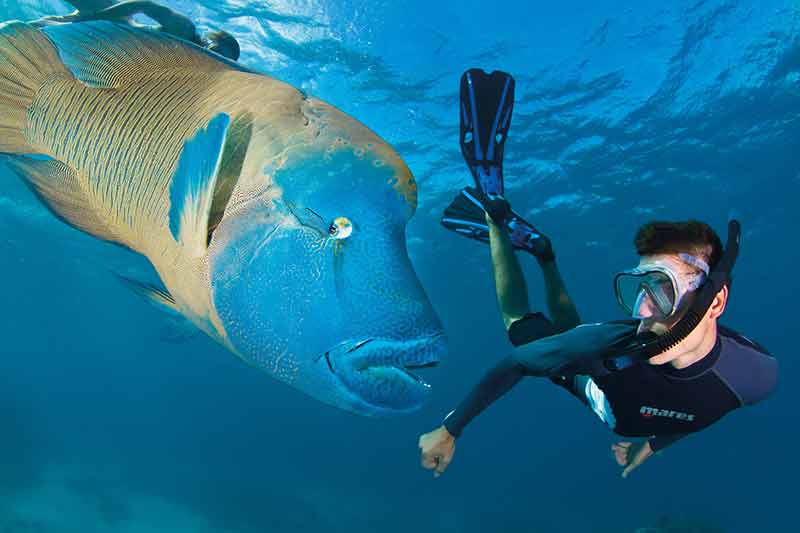
1,635 species of fish can be found in the Great Barrier Reef, including the Potato Cod (Epinephelus tukula), which is a fish with a huge mouth.
Did you know that fish of the Great Barrier Reef have ears?
Scientists use their ear bone to determine the age of the fish.
18- The largest fish is the Giant Queensland Grouper
The biggest fish of the Great Barrier Reef is the whale shark, which is often 12m long, followed by the Giant Queensland Grouper (Epinephelus lanceolatus), which is also Queensland’s aquatic emblem and can grow to 3m (10 feet) long and weight as much as 600kg (1322 pounds).
19- The longest-living fish on the Great Barrier Reef is the Red Bass
The Red Bass can live to over 50 years and are the fish in the Great Barrier Reef with the longest lifespan.
20- Clownfish can swim five times faster than Ian Thorpe
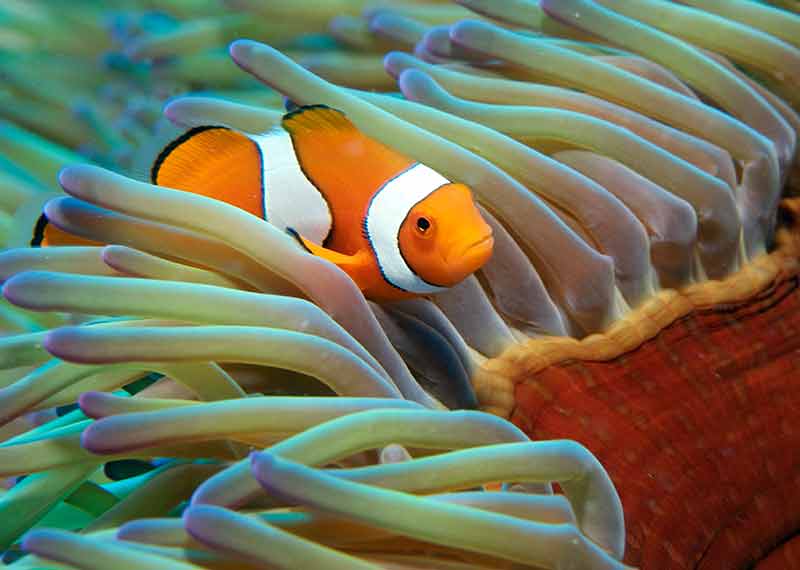
24 hours after hatching, juvenile anemonefish (commonly known as clownfish) can swim 9.5 body lengths per second.
This is amazing when you compare it to multiple medal-winning Australian Olympic swimming legend Ian Thorpe, who could swim two body lengths per second.
Great Barrier Reef animals
21- Turtles are as old as dinosaurs
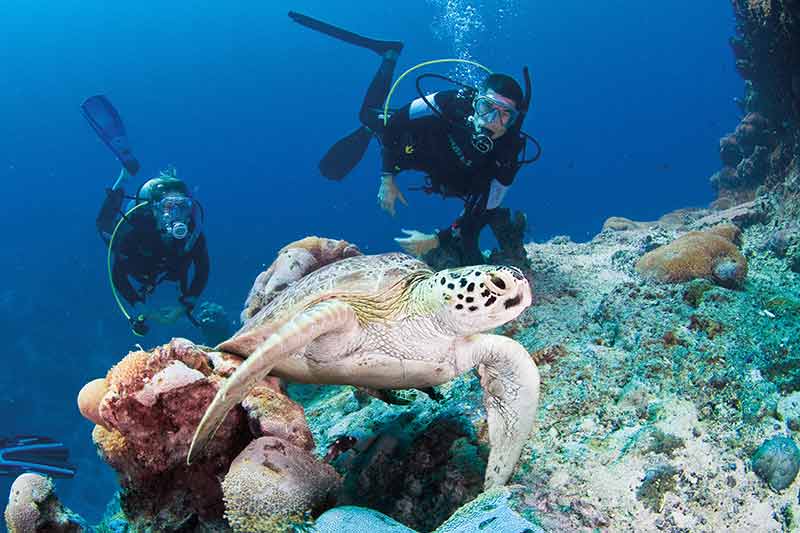
Turtles have been around for 150 million years and six out of seven species of marine turtles (green, hawksbill, leatherback, loggerhead, olive ridley and the flatback) can be found within the Great Barrier Reef World Heritage Area.
The loggerhead turtle population was on the brink of extinction but after 40 years of careful management, the largest concentration of nesting marine turtles on the eastern Australian mainland now occurs at Mon Repos on the Southern Great Barrier Reef, which makes the site the most significant turtle rookery in the Southern Hemisphere.
You can also see turtles at Cairns Aquarium.
20- Manta rays weigh up to 1000 kilograms (2,200 pounds)
According to the largest SCUBA diving organization in the world, PADI, Lady Elliot Island as one of the top places in the world to snorkel and dive with manta rays.
Mantas are gentle giants of the sea, weighing up to 1000 kilograms (2,200 pounds) with a wingspan of over five meters (18 feet).
Manta rays are found in the shallow waters around the islands and reefs.
They have a wingspan of up to seven metres and are believed to be sexually active from about five years of age.
They mate in summer in depths of 1 to 10m when water temperatures are 26 to 29°C.
22- Humpback whales migrate 6000km to breed
Humpback whales are the largest sea creatures in Queensland’s waters.
They grow to more than 15m long and weigh between 27 and 45 tonnes.
They migrate from the Antarctic to the Great Barrier Reef to breed (go whale watching in Hervey Bay) and the migrations can be up to 6000km travelling at speeds between 5 to 14 kph.
Humpback whales travel in pods and an adult male will often escort a pod of returning mothers and calves.
23- Dugongs can’t hold their breath underwater for long
Dugongs are large grey mammals that are related to manatees and when fully grown they can be three metres long and weigh 400 kg.
Surprisingly, dugongs are unable to hold their breath underwater for more than a few minutes.
Dugongs are known as sea cows because they eat seagrass.
They use their flippers and broad tail to swim by moving in an up and down motion.
24- The Great Barrier Reef has hundreds of shipwrecks
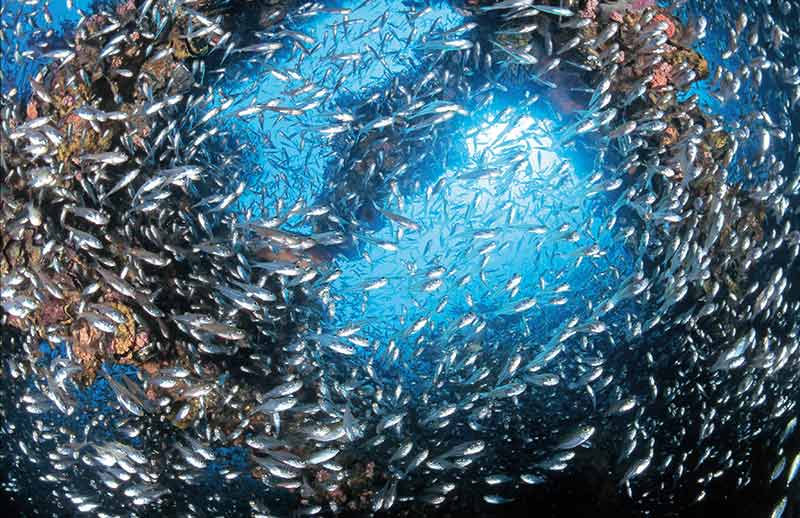
Shipwrecks on the Great Barrier Reef are HMS Pandora (sunk on 29 August 1791 while on a mission to find the HMS Bounty), HM Colonial Schooner Mermaid (13 June 1829) and discovered in 2009, Foam (February 1893), a schooner used to transport South Sea Islanders to work in the cane fields ran into Myrmidon Reef, SS Gothenberg (24 February 1875) and SS Llewellyn (17 July 1919).
The most famous is the SS Yongala (23 March 1911), which sank during a cyclone on the Great Barrier Reef.
The Yongala Shipwreck was found in 1958 and lies beneath the ocean 30 minutes from Townsville and is a magnet for marine life.
Divers are likely to encounter giant gropers, giant trevally and sea snakes.
The most popular place to visit the Great Barrier is from Cairns. Check out these tours:
- Cairns: Green Island & Great Barrier Reef Sailing Tour
- Cairns: Outer Great Barrier Reef Full-Day Tour with Lunch
- Cairns: Outer Edges of The Great Barrier Reef Scenic Flight
- From Cairns: Great Barrier Reef Snorkeling Tour with Lunch
Great Barrier Reef Islands
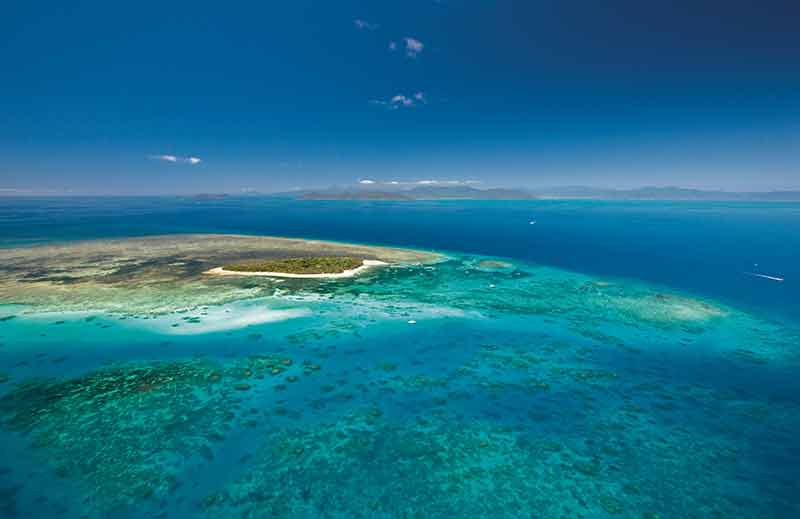
25- Hamilton Island is the only island with a commercial airport
Hamilton Island is the only Great Barrier Reef island accessible by regular commercial flights and you can fly to Lady Elliot Island, an isolated coral cay at the southern extreme of the Great Barrier Reef, by light aircraft.
Recommended tour: Whitsunday Helicopter Tour: Flight + Whitehaven Landing
The Lady Musgrave Island lagoon is a protected lagoon great for snorkelling and the uninhabited island has a National Park camping ground.
Recommended tours:
- From Bundaberg: Barrier Reef & Lady Musgrave Island Day Tour
- Mackay: Full Day Island Boat Tour on the Great Barrier Reef
27- Heron Bommie is listed as Jacques Cousteau’s top ten diving spots
A mecca for divers, Heron Island has more than 20 dive sites and superb snorkelling straight off the beach. Heron Bommie is one of the most photographed sites in the country.
28- Cod Hole
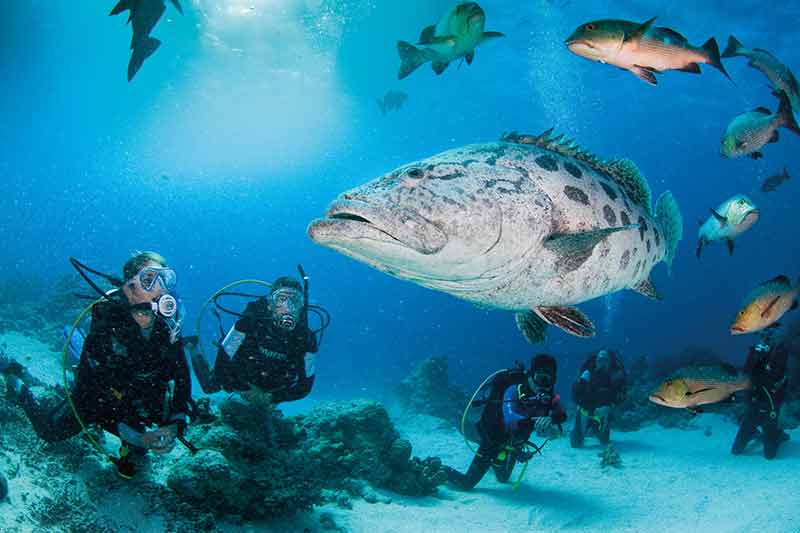
The Cod Hole near Lizard Island is a bucket list diving experience where divers can be amongst 150kg kilo potato cod schools.
29- Citizen scientists can contribute to research
The Great Barrier Reef Marine Park Authority leans on the assistance of citizen scientists to report anything unusual through their Eye on the Reef app where anyone with a GPS-enabled mobile phone can share recent photos of anything happening with the Great Barrier Reef.
30- Around 2.6 million people visit the Great Barrier Reef each year
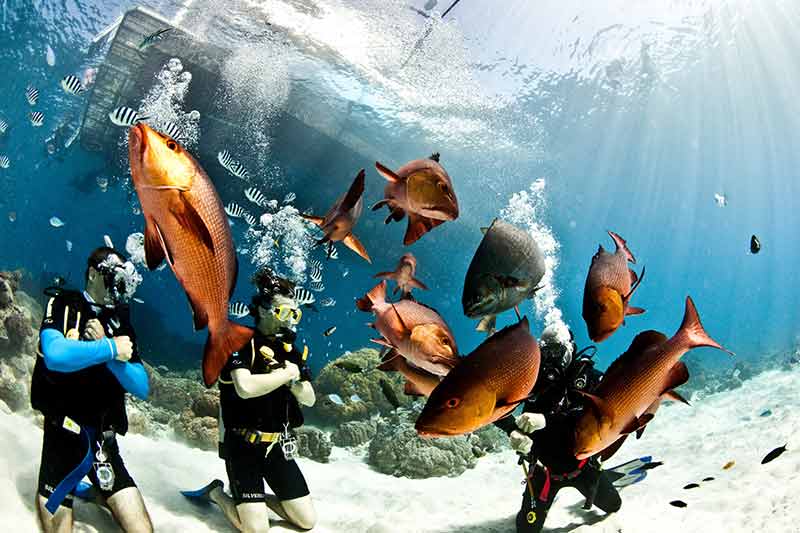
Tourism contributes $12.8 billion to the economy of Australia and the Great Barrier Reef supports 138,000 jobs. Over 1/3 visited as a day trip and about half were Australians who stayed overnight. 14% of visitors were international travellers.
There are a number of ways to experience the Great Barrier Reef, including:
- A day cruise to the outer reefs from Cairns
- Cruising around the Whitsunday Islands
- Staying at Heron Island Resort on Heron Island
- Visiting Lady Elliot Island on a day trip from Brisbane
- Going on a tour to Lady Musgrave Island from 1770 or Bundaberg
- Staying at Lizard Island
- Taking a day tour to Green Island or Fitzroy Island
For more things to see in Queensland check out:
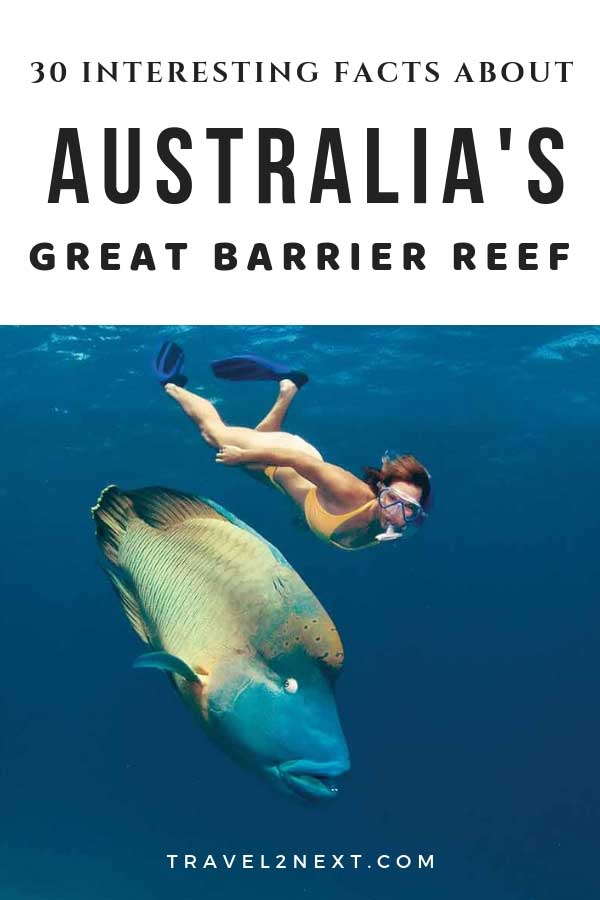
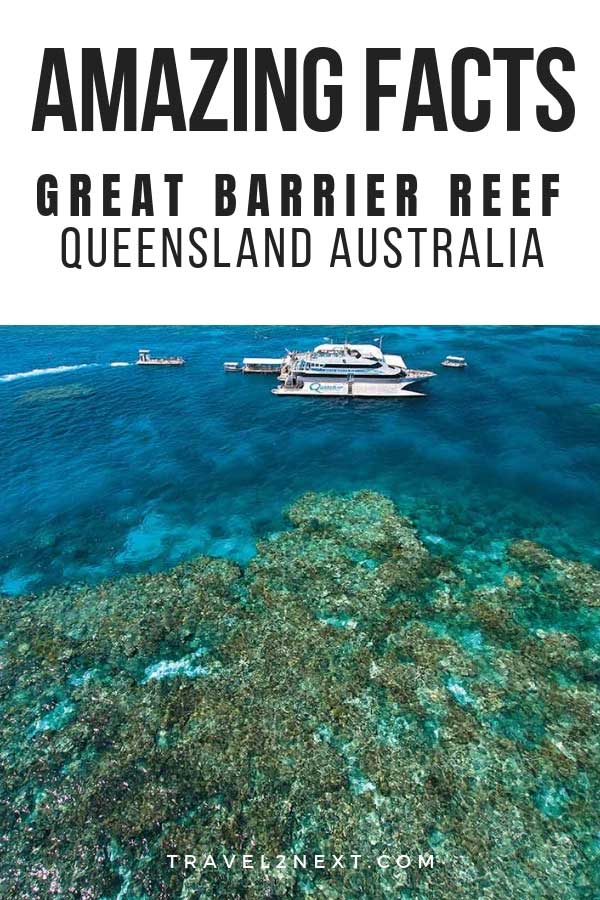
Plan Your Trip
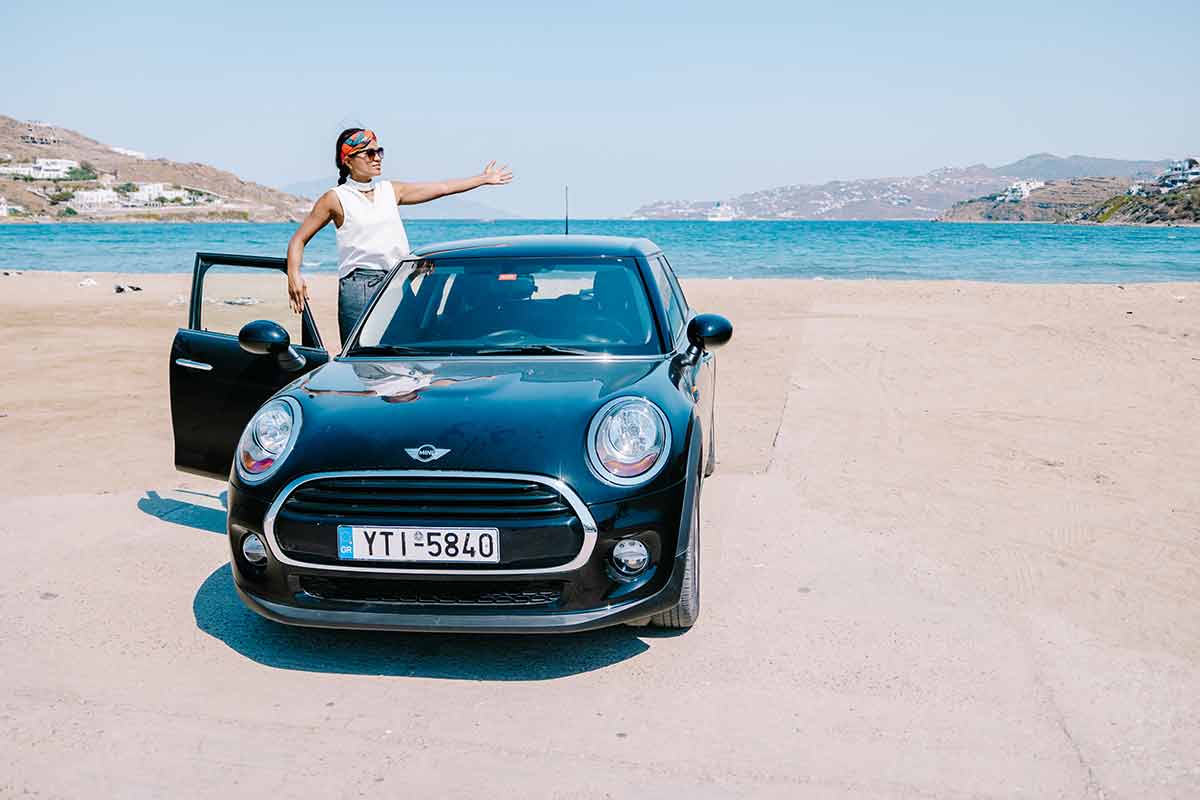
Rent A Car – Find the best car rental rates at Discover Cars. They compare car hire companies to provide you with the best deal right now.

Find A Hotel – If you’re curious about this article and are looking for somewhere to stay, take a look at these amazing hotels.



